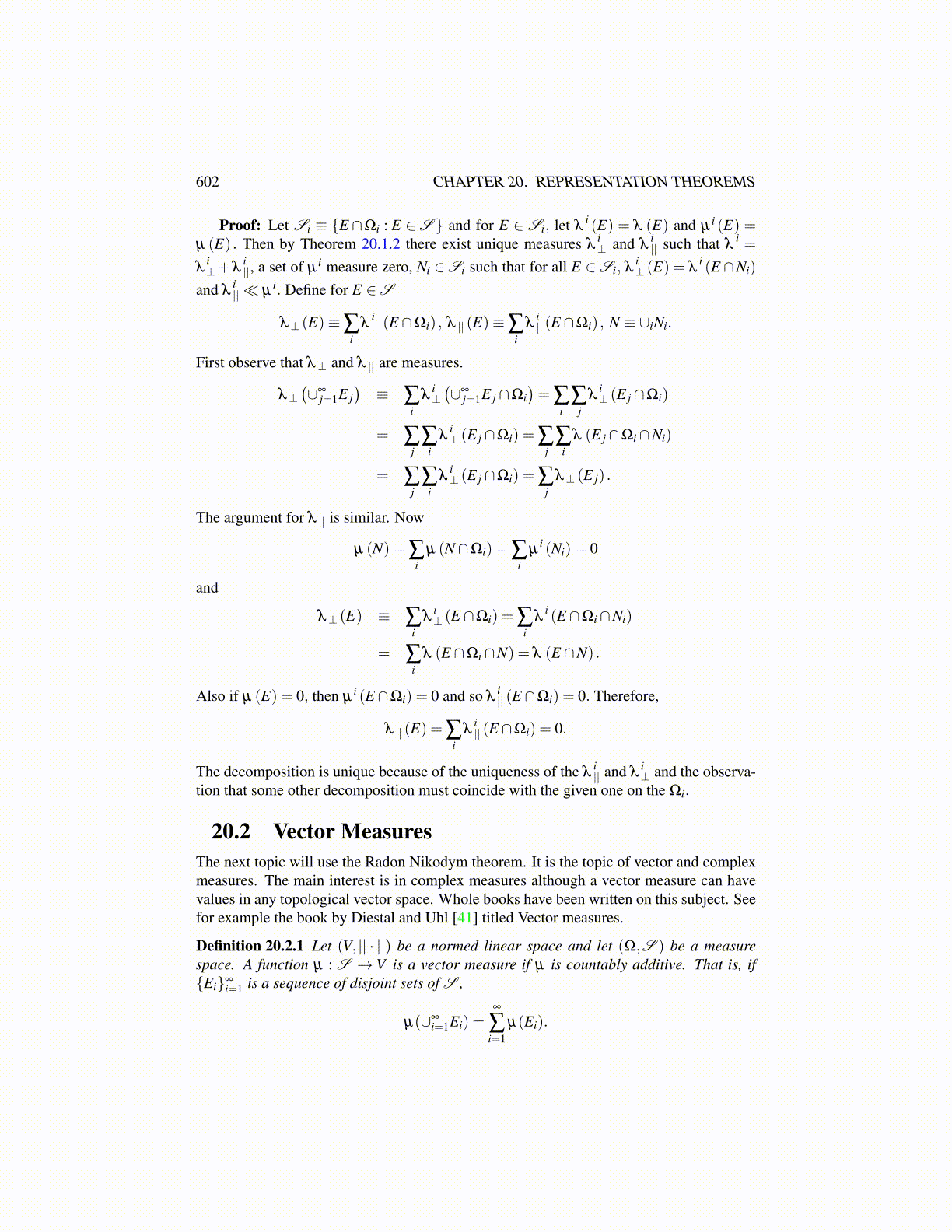
602 CHAPTER 20. REPRESENTATION THEOREMS
Proof: Let Si ≡ {E ∩Ωi : E ∈S } and for E ∈ Si, let λi (E) = λ (E) and µ i (E) =
µ (E) . Then by Theorem 20.1.2 there exist unique measures λi⊥ and λ
i|| such that λ
i =
λi⊥+λ
i||, a set of µ i measure zero, Ni ∈Si such that for all E ∈Si, λ
i⊥ (E) = λ
i (E ∩Ni)
and λi||≪ µ i. Define for E ∈S
λ⊥ (E)≡∑i
λi⊥ (E ∩Ωi) , λ || (E)≡∑
iλ
i|| (E ∩Ωi) , N ≡ ∪iNi.
First observe that λ⊥ and λ || are measures.
λ⊥(∪∞
j=1E j)≡ ∑
iλ
i⊥(∪∞
j=1E j ∩Ωi)= ∑
i∑
jλ
i⊥ (E j ∩Ωi)
= ∑j∑
iλ
i⊥ (E j ∩Ωi) = ∑
j∑
iλ (E j ∩Ωi∩Ni)
= ∑j∑
iλ
i⊥ (E j ∩Ωi) = ∑
jλ⊥ (E j) .
The argument for λ || is similar. Now
µ (N) = ∑i
µ (N∩Ωi) = ∑i
µi (Ni) = 0
and
λ⊥ (E) ≡ ∑i
λi⊥ (E ∩Ωi) = ∑
iλ
i (E ∩Ωi∩Ni)
= ∑i
λ (E ∩Ωi∩N) = λ (E ∩N) .
Also if µ (E) = 0, then µ i (E ∩Ωi) = 0 and so λi|| (E ∩Ωi) = 0. Therefore,
λ || (E) = ∑i
λi|| (E ∩Ωi) = 0.
The decomposition is unique because of the uniqueness of the λi|| and λ
i⊥ and the observa-
tion that some other decomposition must coincide with the given one on the Ωi.
20.2 Vector MeasuresThe next topic will use the Radon Nikodym theorem. It is the topic of vector and complexmeasures. The main interest is in complex measures although a vector measure can havevalues in any topological vector space. Whole books have been written on this subject. Seefor example the book by Diestal and Uhl [41] titled Vector measures.
Definition 20.2.1 Let (V, || · ||) be a normed linear space and let (Ω,S ) be a measurespace. A function µ : S → V is a vector measure if µ is countably additive. That is, if{Ei}∞
i=1 is a sequence of disjoint sets of S ,
µ(∪∞i=1Ei) =
∞
∑i=1
µ(Ei).